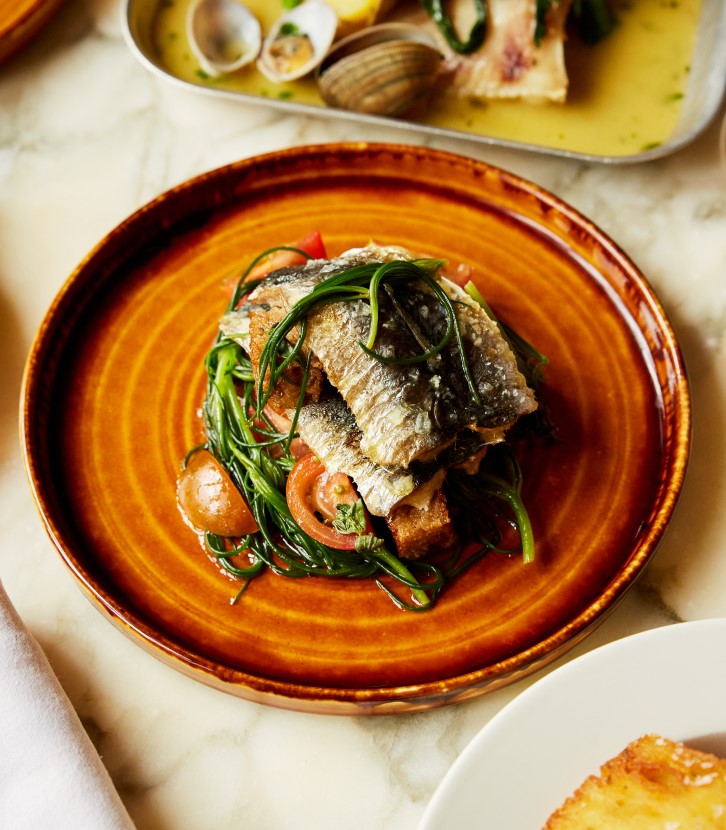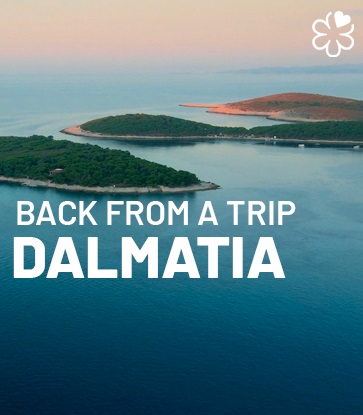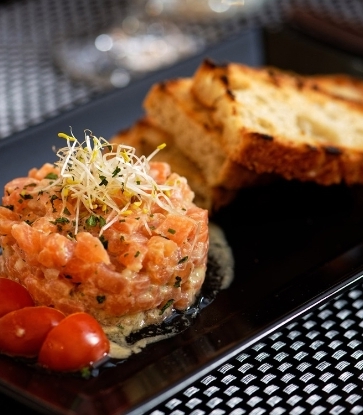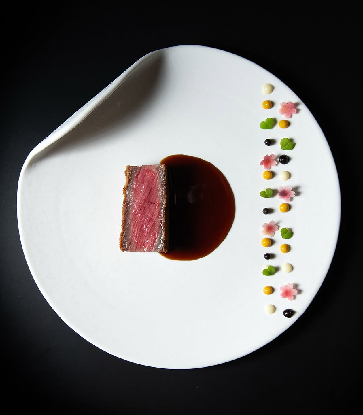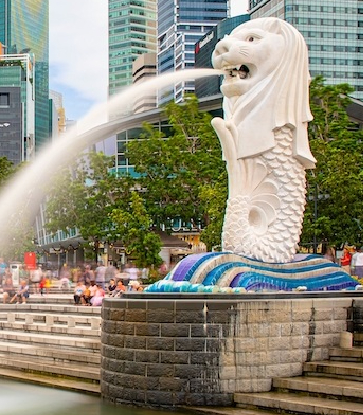This lively and bustling city offers culture, art, relaxation and entertainment throughout the day and night. Belgrade, the Arabian phoenix of the Balkans, has withstood the trials and tribulations of its history to become one of the most interesting and lively destinations in Europe for curious travellers.
Protected by the branches of its two rivers, the Danube and the Sava, Belgrade offers a whole host of attractions for visitors. Here you’ll find museums which preserve the country’s history; markets teeming with life and offering plenty of opportunities to purchase typical produce and souvenirs; excellent cuisine ranging from street food to fine dining in Michelin-listed restaurants such as Bela Reka and Gušti mora, and many others which you can explore by clicking here. Head to the city’s parks and gardens for a relaxing stroll in verdant surroundings or make for one of the many night clubs or cocktail bars if you’re planning a fun night out.
To help you explore this fascinating and distinctive city straddling East and West, we’ve listed our recommendations for unmissable sights in Belgrade below.
Belgrade Fortress
Built by the Celts at the confluence of the Sava and Danube rivers, Belgrade Fortress dominates the city with its imposing beauty. In the second century, the Romans founded a castrum for the Fourth Flavian legion at this strategic location. Over the centuries, the castle was destroyed and rebuilt on numerous occasions, always remaining at the heart of the city which grew around it.
Fought over by the Byzantines, Hungarians and Serbian kings, the Fortress was for centuries a battle ground between two great powers – the Ottoman and Austro-Hungarian Empires. During the Ottoman period, the fortress served as a base from which to observe the enemy and prepare for battle, and for this reason was named Kalemegdan (from the Turkish “kale” meaning fortress and “megdan” meaning field).
This rich past can be admired in the castle’s complex architecture, which combines Ancient Roman walls, Serbian ramparts and subsequent Turkish and Austrian additions to the fortifications.
Today, the fortress hosts cultural and music events, many of which are held in the Barutana club, used to store gunpowder in the 18C.
Other places to visit within the inner fortress include the Military Museum, the Roman Well, the tombs of the national heroes, and the Natural History Museum, which is housed in the old sentry building. The area is also home to children’s play areas, sports fields and restaurants.
Two Orthodox churches, Ruzica and Sveta Petka, are also well worth a visit.
The fortress is also the site of Belgrade’s largest park, a popular area for a relaxing stroll, which boasts breathtaking views of the confluence of the two rivers and the modern skyline of Novi Beograd (New Belgrade).
Culture enthusiasts will also enjoy visiting the Cvijeta Zuzorić art pavilion and the Music Pavilion.
Also within the fortress, don’t miss the city zoo which is one of the largest and most popular in Europe, boasting 150 different species and 1,700 animals.


Sveti Sava Temple
This is the largest Orthodox temple in south-east Europe. According to legend, it was founded on the exact spot where the Ottomans Turks publicly burnt the relics of Saint Sava (Rastko Nemanjic) in the 16C. Sava was the son of the powerful Serbian sovereign Stefan Nemanja, founder of the reigning Nemanjic dynasty and the first archbishop of the Serbian Orthodox Church.
Thanks to its beauty, this magnificent temple is one of the country’s symbolic sights and one of the most popular attractions in Belgrade. Its proportions are huge: the complex covers an area of 3,500m2 with a dome that measures more than 30m in diameter and is just under 80m in height.
The interior is equally stunning, boasting complex mosaic decorations in natural stone and glass, used to create spectacular images and compositions such as the Vaznesenje Hristovo (The Resurrection of Christ) depicted under the central dome.
The crypt houses the Saint Sava treasures and the tomb of the despot Stefan Lazar Hrebeljanović.
After visiting the temple, we recommend a walk along the banks of the Sava where you can have lunch or dinner in one of the city’s typical floating restaurants.

The Kosančićev Venac district
If you’re looking for an area with a timeless atmosphere, make your way to Kosančićev Venac, one of the oldest districts in the city. You’ll be enchanted by its narrow cobbled streets, and the 19C houses and mansions which tell the story of a past which is very different from the modern buildings just a few hundred metres away. Hidden along its narrow alleyways, you’ll find wine bars and taverns that give this part of Belgrade a real Bohemian feel. Don’t miss the Konak Kneginje Ljubice, once the residence of Princess Ljubica (a gift from her husband Prince Miloš Obrenović) and now a museum, as is the nearby church dedicated to the Archangel Michael. The whole neighbourhood provides a romantic glimpse of a “slower” pace of life in the heart of a bustling modern city.
Belgrade’s museums
If you love art, history and culture, then a visit to Belgrade will certainly not disappoint. The National Museum is one of the city’s oldest institutions and home to more than 400,000 works of art (drawings, paintings and sculptures) by artists from Serbia and further afield. The National Museum is divided into three exhibition spaces: the Gallery of Frescoes, the Museum of Vuk and Dositej, and the Memorial Museum of Nadežda and Rastko Petrović. The museum spans a period which extends from the Prehistoric era to the 20C, with a large space dedicated to numismatics.
Also not to be missed is the Museum of Contemporary Art which houses more than 8,300 works by the most important Yugoslavian and Serbian painters, photographers, sculptors, performers and video-artists of the 20C and 21C. Start your visit with the works of civil Modernism, then move on to its land-art and body-art performances. Journey back to the 1950s and discover how Socialism influenced the creation of Modernism and learn all about the avant-garde Zenitism movement, Slovenian Constructivism and Surrealism in Belgrade.
The photography section is particularly interesting, with its depictions of the country’s reconstruction after the Second World War, while the 1970s are represented by works which highlight the energetic and non-conformist sub-culture of this period. Art would subsequently become critical and prominent during the Balkan wars of the 1990s.
A visit to Belgrade’s Museum of Contemporary offers a fascinating introduction to original, creative and experimental works which have had a marked influence on international art.
Meanwhile, the Historical Museum of Serbia houses more than 25,000 different exhibits, from national flags to historical manifestos, and from weapons to royal crowns. Here you’ll also find a collection of rare photographs and archive materials that will take you on a journey back in time.
The Ethnographical Museum is the perfect place in which to learn all about the traditions, culture and way of life in the Balkans and to understand the history of former Yugoslavia. Traditional costumes, domestic items, fabrics, carpets, furnishings, dishes, artefacts, pieces of furniture, old photographs and paintings all form part of a collection that boasts more than 150,000 pieces.
The Museum of Yugoslavia is dedicated to the conservation and interpretation of the complex Yugoslavian heritage. The museum displays exhibits relating to each stage of the development – and subsequent decline – of Yugoslavia: from its earliest conception to the creation of the Kingdom of Yugoslavia and the Socialist Federal Republic of Yugoslavia, up to its disintegration and the phenomenon of Yugo-nostalgia.
As already mentioned, the Natural History Museum in Kalemegdan is also well worth a visit, with its rich collection of minerals, fossils and numerous plant and animal species.
Technology-buffs shouldn’t miss the Nikola Tesla Museum occupying a residential villa built in the centre of Belgrade in 1929 and the only museum in the world dedicated to this famous scientist. The museum is home to more than 160,000 items of historical value, including original documents, books, magazines, plans, photos, technical instruments and machines, and designs by one of the men who changed the history of science globally.
Parks and gardens
Belgrade is one of Europe’s greenest cities thanks to its vast gardens and well-maintained parks, with more than 65 green spaces offering visitors a chance to relax and unwind after strolling around and visiting the city. Although Kalemegdan Park in the above-mentioned Fortress is without a doubt the largest of these parks (and the most popular with locals and visitors alike), there are many other pleasant green spaces dotted around the city. Topčider is the oldest park, while others include the Students’ Park, Hyde Park and Tašmajdan Park. Here, you’ll find trees, paved paths for jogging, play areas and other amenities such as bars and restaurants, as well as numerous drinking fountains for filling up your water bottle. Also highly recommended is Jevremovac, the botanical garden of Belgrade University’s Faculty of Biology, with its collection of rare and little-known plant species.
Markets
From shopping centres home to major international brands to the historic shops of the city centre, Belgrade offers visitors a wide array of shopping options. Situated in the heart of the city, Knez Minailova street and its surrounding area are home to traditional shops such as greengrocers, butcher’s and bakers selling local specialities, as well as large, luxurious shopping malls and supermarkets which are typically “Western” in style. In addition, the city boasts outdoor markets (usually open from 6am to 7pm) selling fresh fruit, typical produce, and a range of other items. Among these, Kalenic Market and Bajloni Market, also known as Skadarlija market (from the district in which it is located), are well worth a visit. At various times of year, you’ll also find “night markets” which stay open until late into the evening.
A trip to this multi-faceted city is worthwhile at any time of year, but if time is of the essence, simply choose from our list of highlights and hit the ground running!

Hero image: Belgrade, Sava bridges, evening, by Aleksandar Matić






